Chemistry > Virtual Clinical Experiment (VCE) > CHEM120 Week 2 Virtual Lab: Ionic and Covalent Bonds Part 1 and Part II – Download To Score An A+ (All)
CHEM120 Week 2 Virtual Lab: Ionic and Covalent Bonds Part 1 and Part II – Download To Score An A+
Document Content and Description Below
CHEM120 Week 2 Virtual Lab: Ionic and Covalent Bonds Part 1 and Part II – Download To Score An A+ OL Lab 2: Periodic Table/Ionic and Covalent Bonds Learning Objectives • Describe the str... ucture and organization of the periodic table • Classify elements of a family based on their location in the periodic table • Distinguish metals from other element classes based on typical characteristics • Use the flame color test to identify metals based on their position in the periodic table • Explain valence electrons and oxidation state of a main group element to its position in the periodic table • Describe the main trends among groups and periods for atomic properties • Explain the causes on the atomic level for the main trends among groups and periods concerning atomic radii, ionization energy and electronegativity • Describe the formation of ionic and covalent bonds • Identify anions and cations • Apply the octet rule • Describe ionic lattice structure • Draw Lewis dot structures • Explain the formation of single, double, and triple bonds • Distinguish between ionic compounds and covalent compounds Introduction Have you ever wondered how atoms are held together? In this simulation, you will learn the basics about atomic bonding in ionic and covalent compounds, and how to distinguish those compounds experimentally. With all this knowledge, you will help your friend analyze two mysterious substances he received from an alchemist. By testing their specific physical properties, you’ll be able to identify the nature of the substances. Finally, you will learn how ions form lattice structures and how this influences the property of a compound. Test solubility and conductivity Atoms can interact in many different ways, creating new compounds with unique properties. In the first mission of the Ionic and Covalent Bonds simulation, your task is to choose appropriate laboratory equipment to test the solubility and conductivity of the two substances. You will explore how these properties differ in ionic and covalent compounds. Draw Lewis dot structures In the second part of the Ionic and Covalent Bonds simulation, you will learn about the octet rule and how to apply this to building Lewis dot structures in a virtual drawing activity. You will see that there are many ways that covalent bonds can be formed, depending on the compound and electron configuration. You will also learn how to identify lone pair electron in a covalent bond. Determine melting points In the last mission, your task is to determine the melting point of the two substances by using a melting point apparatus. You will explore how your results are connected to the ability of ions to form a lattice structure. Part 1: Complete Labster lab Periodic Table of Elements: Get the table organized in time! (about 40 mins) Complete all activities and answer all questions within the lab and then complete the questions below: 1. For each of the following elements, give another element in the same family (2 points) a. F = Br b. Mg = Ba c. C = Se d. S = O 2. In your own words, describe the term electronegativity An atom or a functional group's electronegativity describes a chemical property that attracts electrons to it. 3. In your own words, describe the term ionization energy An isolated atom or molecule's ability to remove electrons. Part 2: Complete Labster Lab Ionic and Covalent Bonds (about 40 mins) Complete all activities and answer all questions within the lab and then complete the questions below: 1. Purpose: Describe in complete sentences and in your own words, the purpose of this experiment. The purpose for the lab was to understand and know the difference between the anions and cations, ionic, and covalent compounds. To explain and show how to do the Lewis Dot structure. 2. Observations: Record three observations from the simulation. I. Nonmetals in the periodic table are in blue, and metals are in green. II. After stirring all three solutions in the experiment they went from cloudy to clear. III. Got to see the Lewis Dot structure of CH4, CO, Ch2O, and HCN2 3. In your own words, explain the term Ionic bond Ionic bond is when the electron of a bond is transferred from a metal to a nonmetal, it’s attracted to the opposite charge. 4. In your own words, explain the term Covalent bond Covalent bond is a bond that has two or more atoms that share one or more pairs of electrons. 5. For each of the below, predict the expected ion each could become by giving the charges (2 points) a. O = 2- charge b. Li = 1+ charge c. Mg = 2+ charge d. N = 3- charge 6. For each of the molecules below, determine what molecular shape you would expect a. HCN = linear b. PCl3 = Trigonal pyramid 7. Reflection: Consider what you learned from this simulation. Reflect on three to four key concepts that you learned in this lab exercise. How could the lessons learned in this virtual lab relate to a real world situation in the community/world or your future career? Be specific in your answer (this should require 5-10 sentences). As a result of this lab, I now have a better understanding of the Lewis Dot Structure. The practice problems we had for it really helped. I still feel personally that I need to study it more. I still found it challenging, but it helped me narrow down my needs. The difference between anions and cations and ionic and covalent compounds were two other concepts I learned. We gained a better understanding of the periodic table, which contains all the elements we use every day. Several of these elements are used every day. Grading Rubric: Activity Deliverable Points Part I Complete Periodic Table simulation 10 Part II Complete Ionic and Covalent Bonding simulation 10 Part III Complete lab report and answer questions • Purpose (1 point) • Observation (7 points) • Questions (5 points) • Reflection (2 points) 15 Total Complete all lab activities 35 [Show More]
Last updated: 1 week ago
Preview 1 out of 5 pages
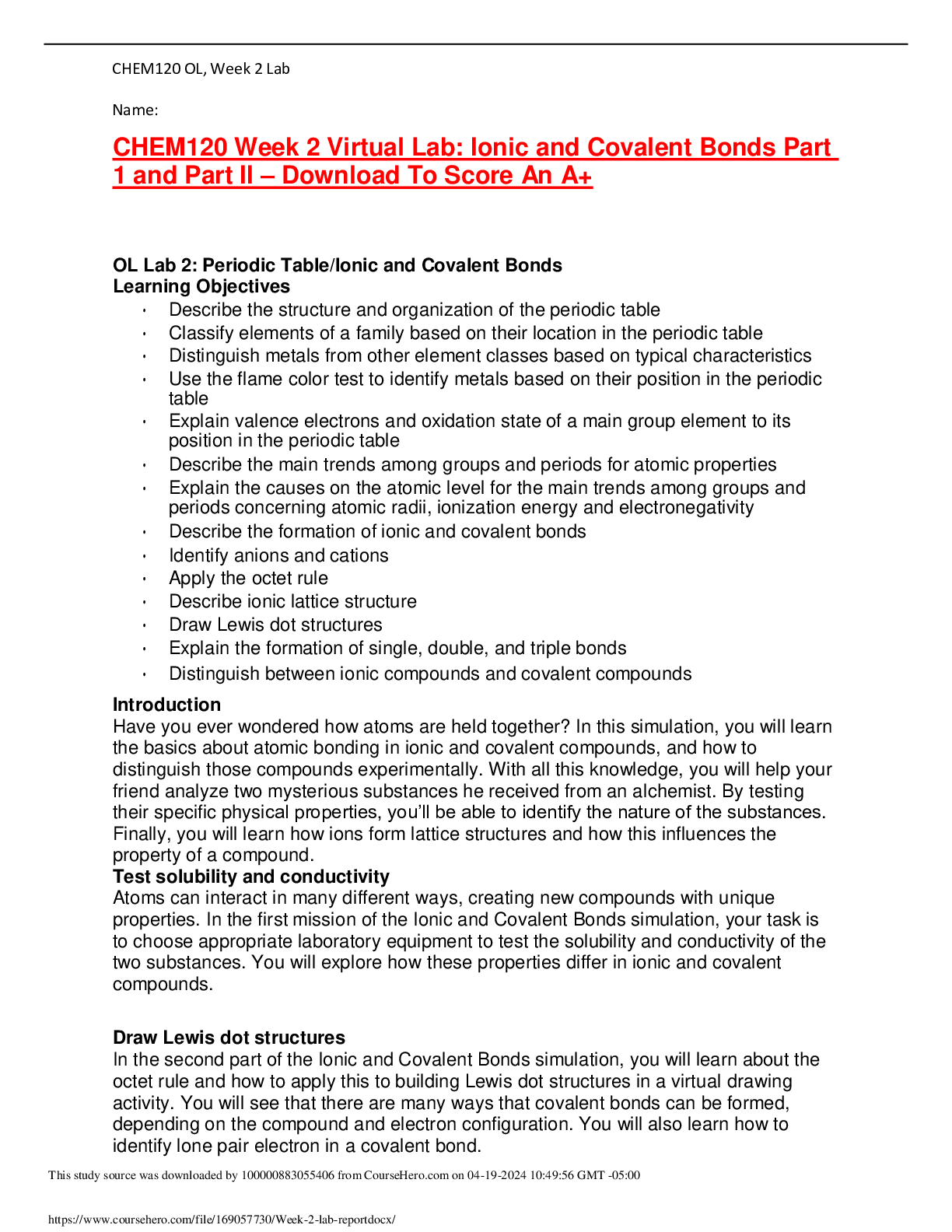
Reviews( 0 )
Document information
Connected school, study & course
About the document
Uploaded On
Apr 19, 2024
Number of pages
5
Written in
Additional information
This document has been written for:
Uploaded
Apr 19, 2024
Downloads
0
Views
7

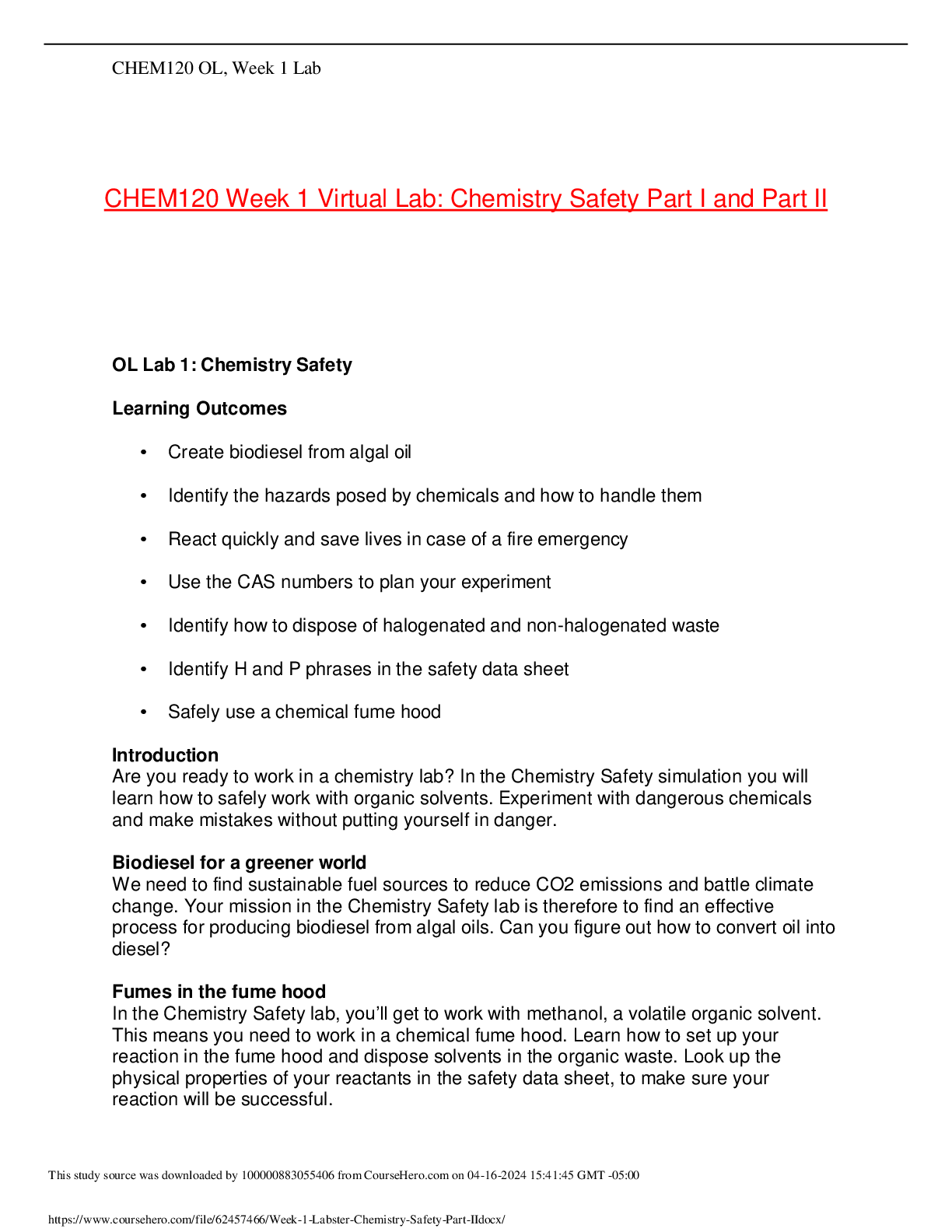
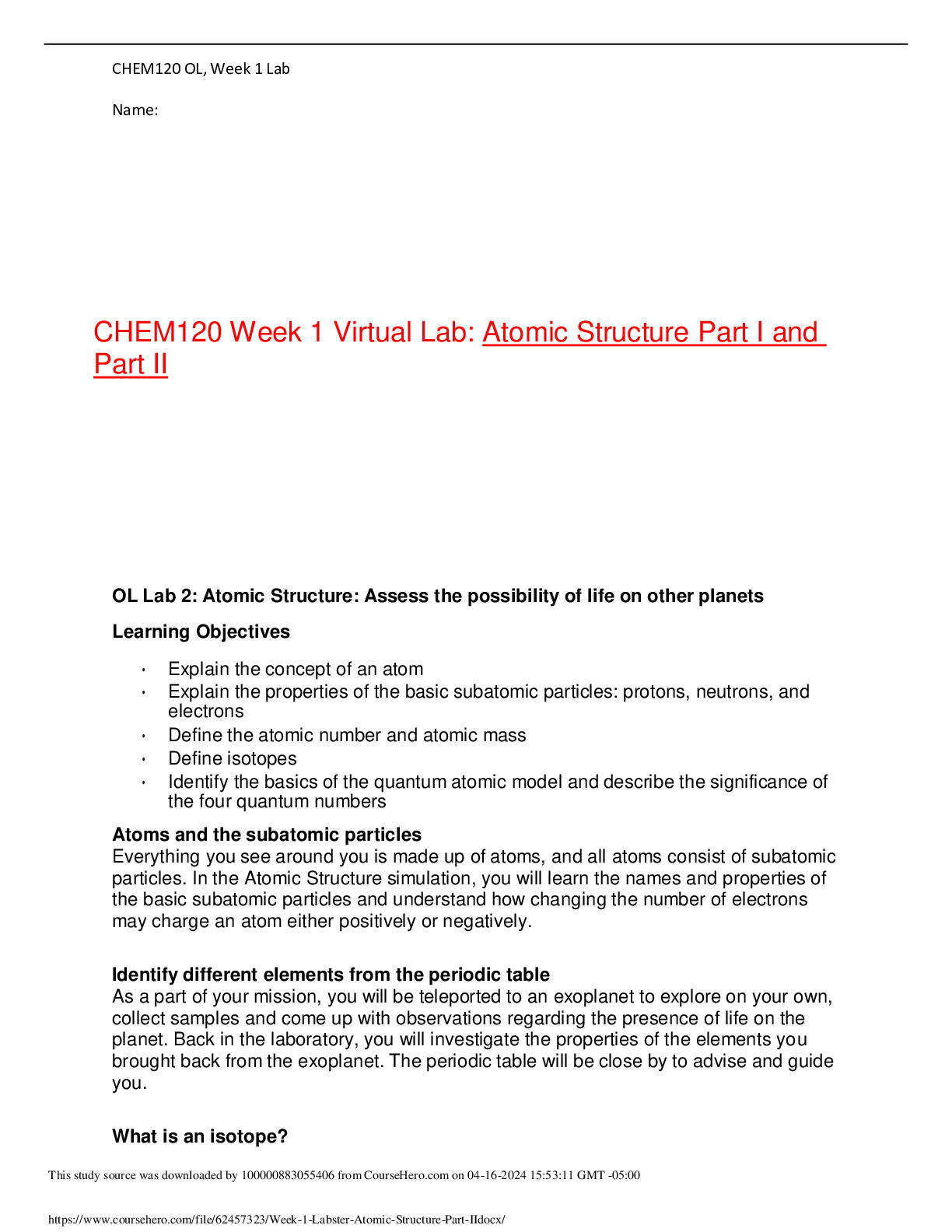

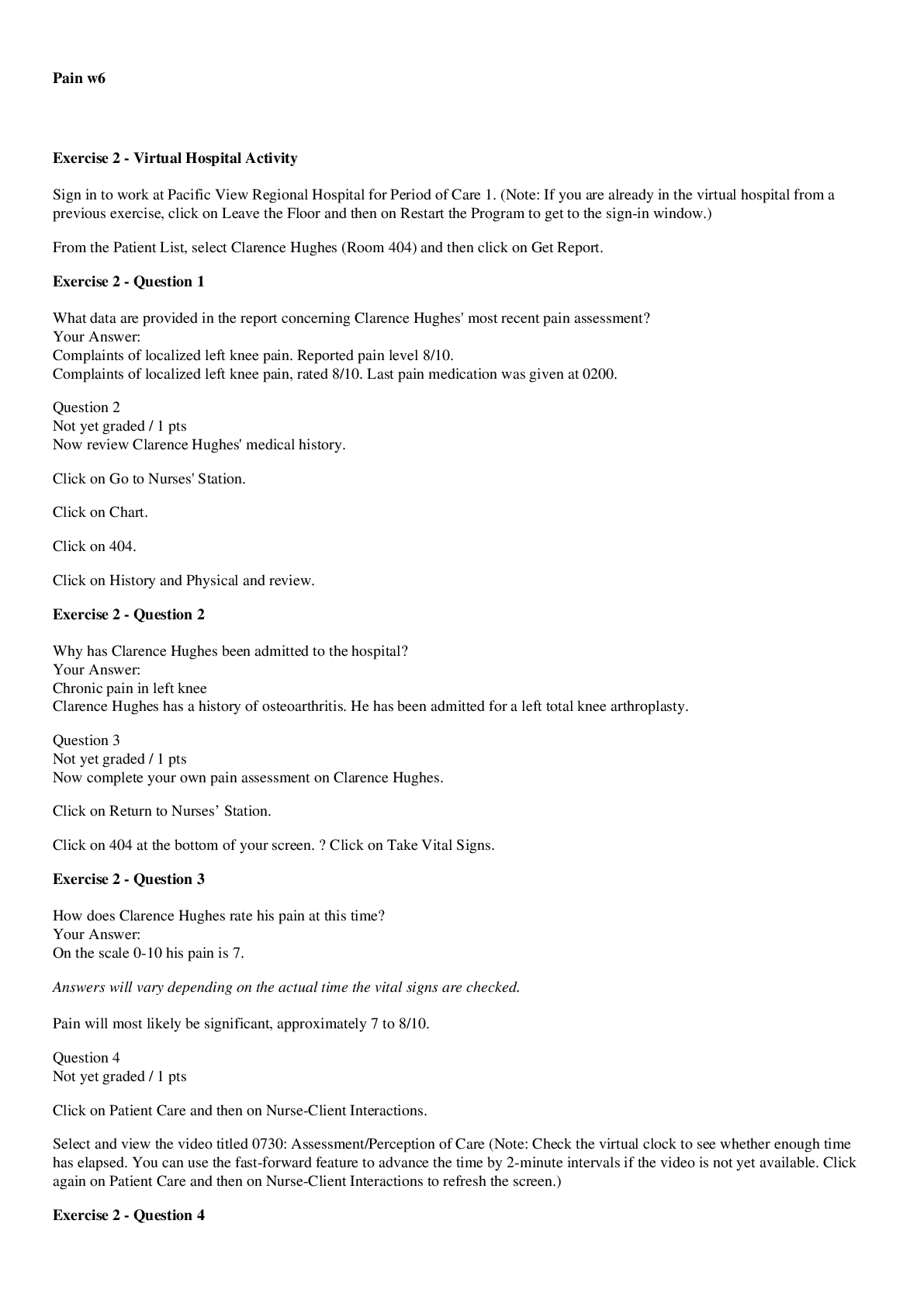

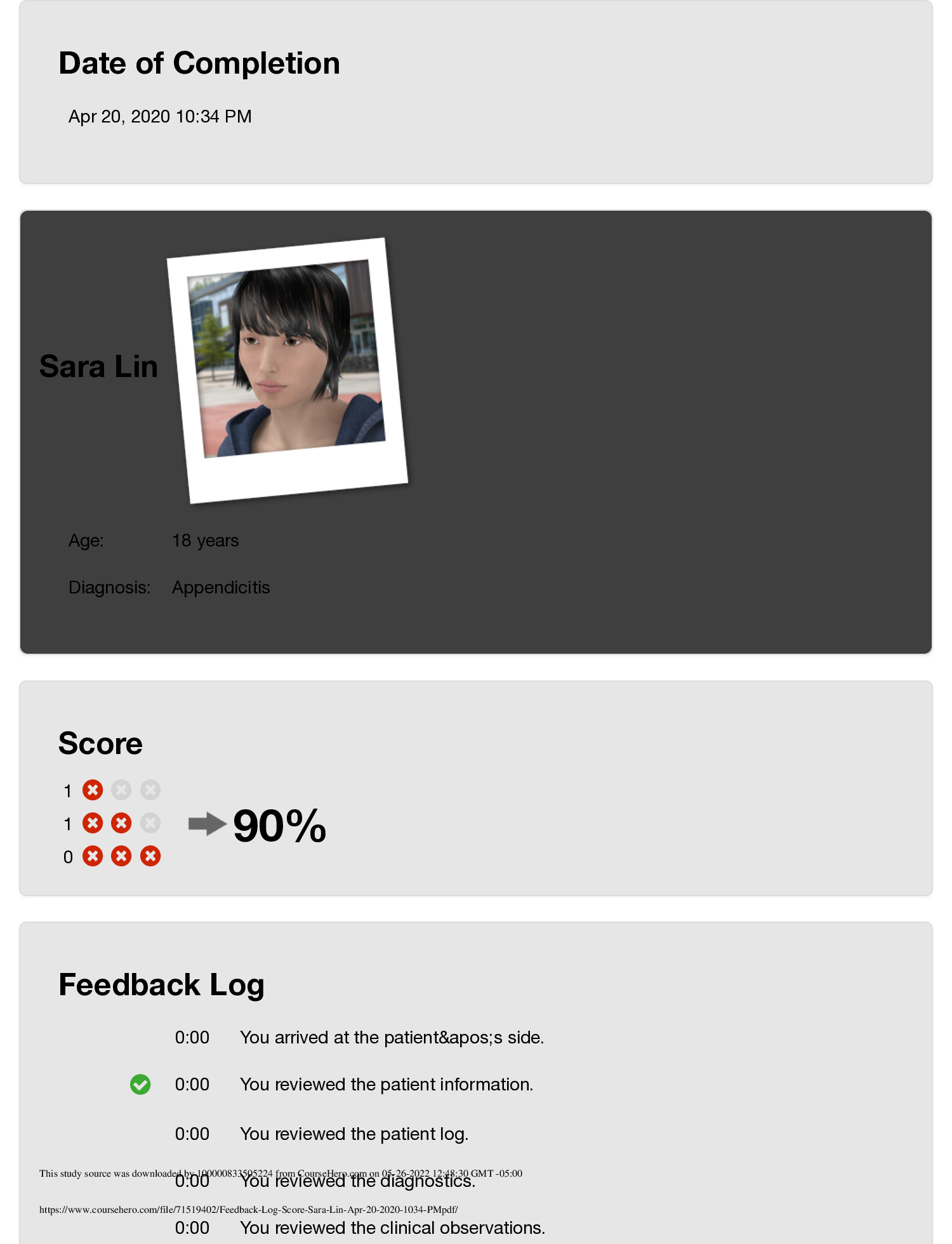
.png)
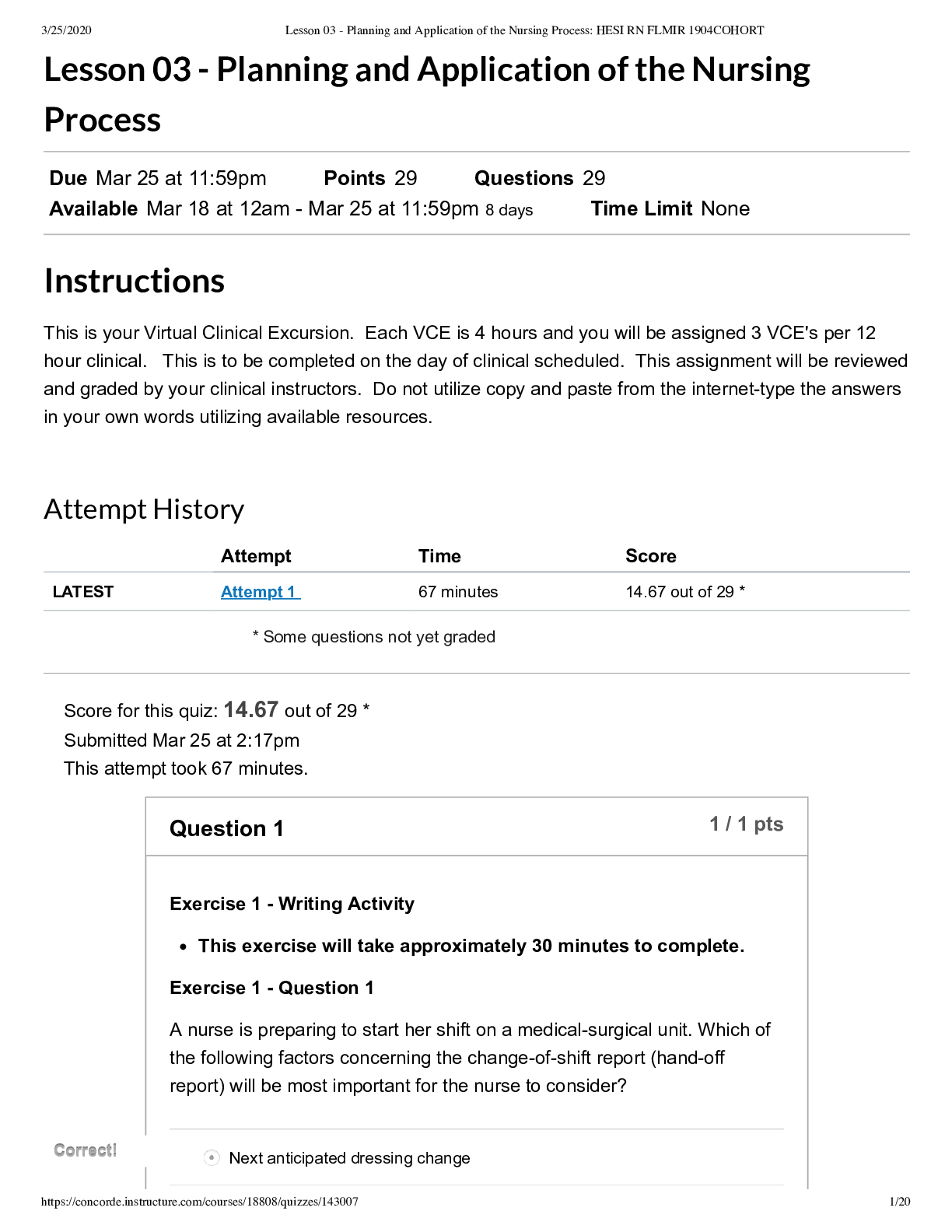
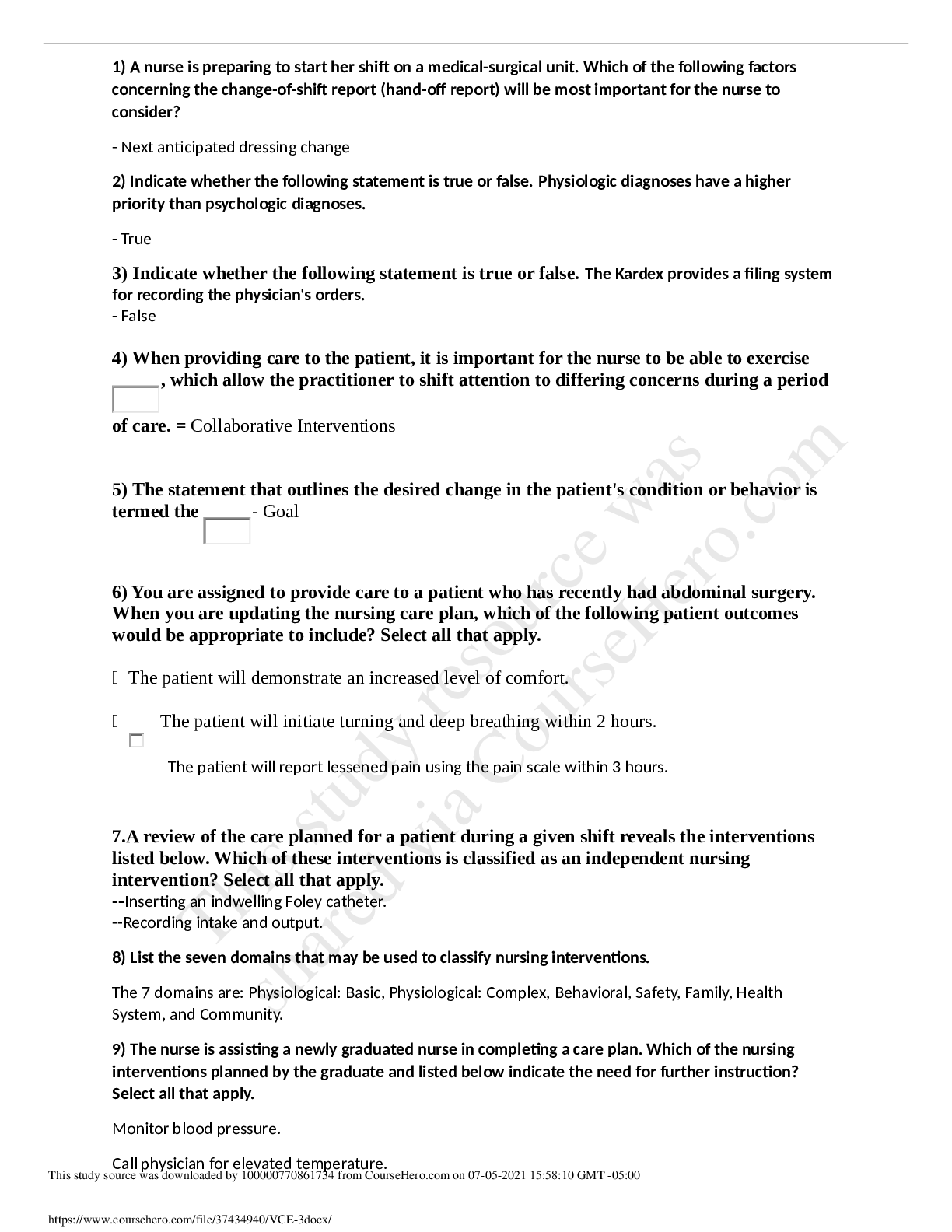
.png)
.png)

